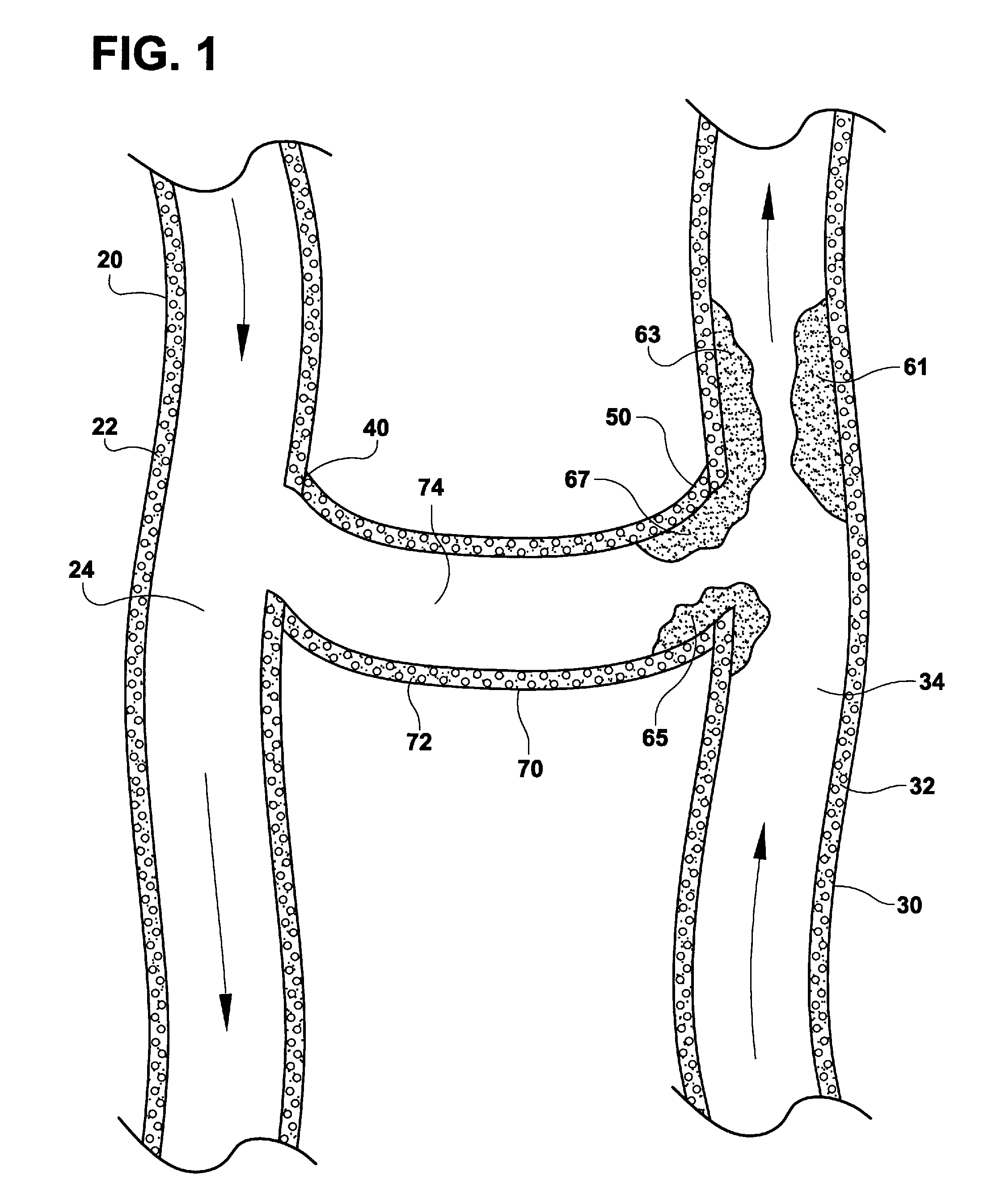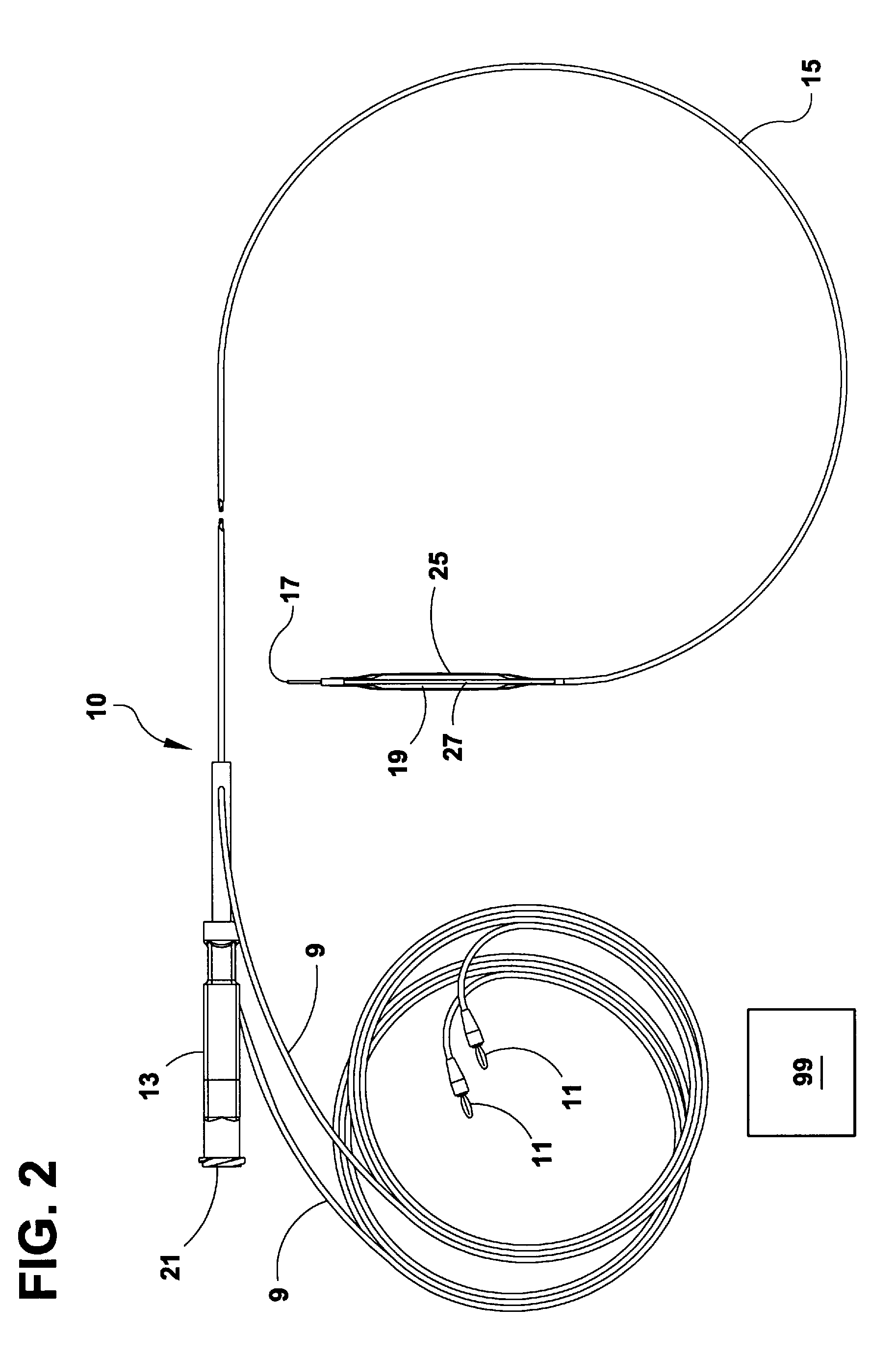Method for Treatment of Complications Associated with Arteriovenous Grafts and Fistulas Using Electroporation
a technology of arteriovenous grafts and fistulas, which is applied in the field of electroporation devices and methods for treating complications arising from long-term venous access devices, can solve problems such as graft failure, clot formation, and complications in many patients
- Summary
- Abstract
- Description
- Claims
- Application Information
AI Technical Summary
Benefits of technology
Problems solved by technology
Method used
Image
Examples
Embodiment Construction
[0025]The present invention can be understood by reference to FIGS. 1 through 12. FIG. 1 illustrates an arteriovenous (AV) graft connecting an artery and vein and illustrating areas of stenotic build-up. As mentioned above, as used herein, “graft” is inclusive of an A / V graft and A / V fistula. Artery 20 has an arterial wall 22 and lumen 24. Blood flows away from the heart through artery 20 in the direction of the arrows. Vein 32 has a vein wall 30 and lumen 34 through which blood flows at a lower pressure toward the heart in the direction of the arrows. Connecting vein 32 to the artery 20 is AV graft 70 with graft wall 72 and graft lumen 74. Graft 70 is surgically connected to artery 20 at arterial anastomosis 40 and to vein 32 at venous anastomosis 50. A portion of the blood volume flowing through artery lumen 24 will be diverted through graft lumen 74. The graft blood flows through the graft lumen 74, entering the vein blood flow through venous anastomosis 50. During dialysis proce...
PUM
 Login to View More
Login to View More Abstract
Description
Claims
Application Information
 Login to View More
Login to View More - R&D
- Intellectual Property
- Life Sciences
- Materials
- Tech Scout
- Unparalleled Data Quality
- Higher Quality Content
- 60% Fewer Hallucinations
Browse by: Latest US Patents, China's latest patents, Technical Efficacy Thesaurus, Application Domain, Technology Topic, Popular Technical Reports.
© 2025 PatSnap. All rights reserved.Legal|Privacy policy|Modern Slavery Act Transparency Statement|Sitemap|About US| Contact US: help@patsnap.com



